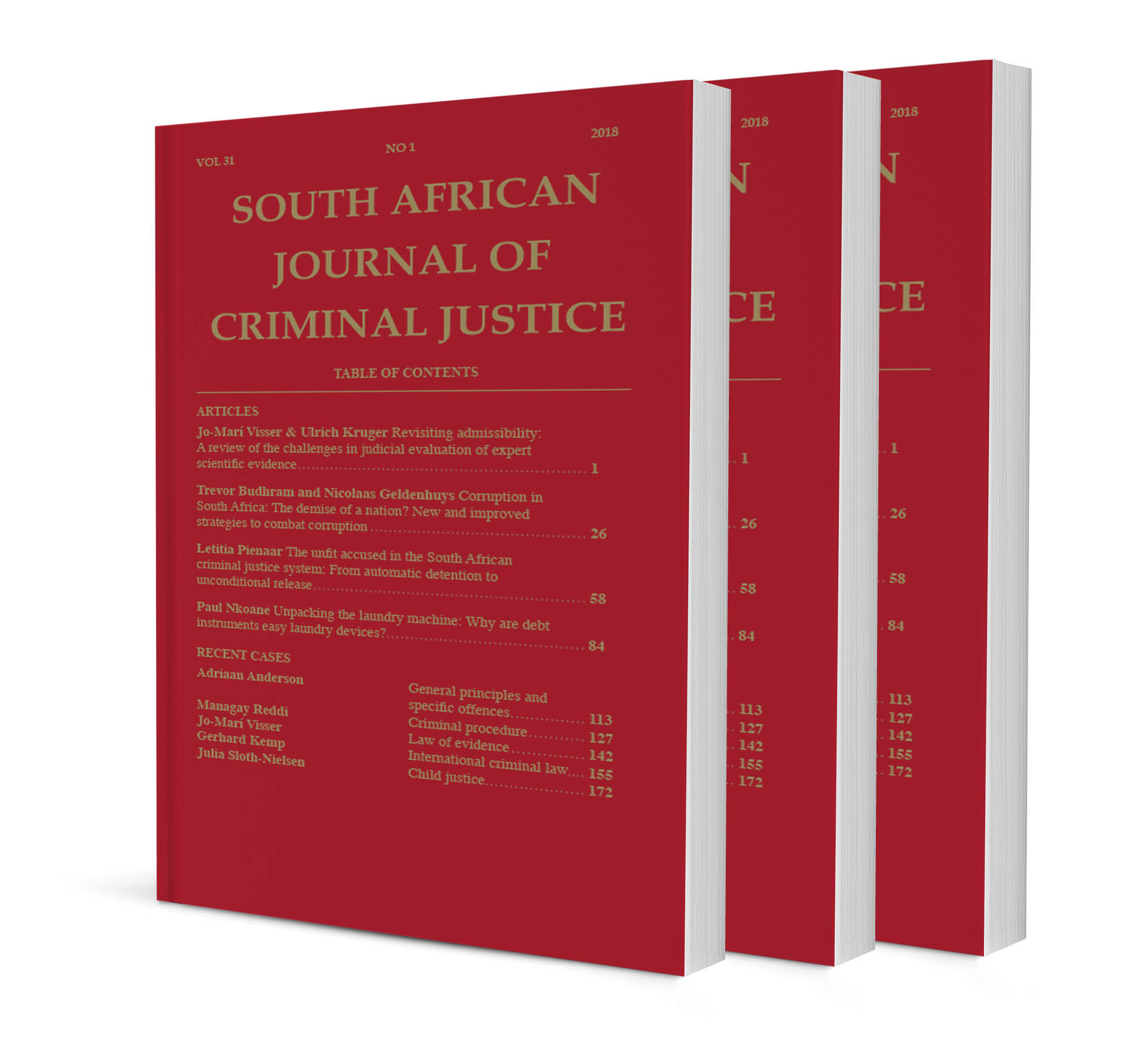Inclusive pre-sentencing reports for children who conflict with the law: Applying and executing section 71 of the Child Justice Act

Inclusive pre-sentencing reports for children who conflict with the law: Applying and executing section 71 of the Child Justice Act
Authors: Maryna Human, Leandré C Geoffrey and Theophilus Lazarus
ISSN: 1996-2118
Affiliations: PhD; School of Criminal Justice, University of South Africa; BA(Hons) MA PhD (Unisa); Senior Lecturer, Department of Criminology and Criminal Justice, University of Limpopo; PhD MNAN (USA); Adjunct Professor, Department of Psychology, Emory University, Registered Neuropsychologist (Health Professions Council of South Africa)
Source: South African Journal of Criminal Justice, Volume 37 Issue 1, p. 1 – 20
https://doi.org/10.47348/SACJ/v37/i1a1
Abstract
Despite the progressive nature of the Child Justice Act (CJA) to uphold the best interest principle of all children who come into conflict with the law, s 71(1) and (2) of the CJA that outlines the pre-sentencing evaluation reports required for sentencing, fail to meet and uphold this objective. This is of particular importance given the multi-complex and multi-faceted advancements in scientific findings regarding the development of criminal behaviour in children. This paper reviewed and concluded the following key aspects pertinent to the execution of pre-sentencing reports: (1) practitioners are not provided with clear guidelines specifying key factors that need emphasis in the pre-sentence reports; (2) practitioners are often inexperienced in child development (brain and psychological) processes and lack the requisite knowledge and skills in crime causation to compile the reports; and (3) the best interest principle is hampered by a severe staffing problem, heavy workloads, and tight timeframes governing the compilation and submission of reports.
This submission was primarily influenced by the findings from research that explored and subsequently developed an action plan for criminologists with a view toward specialisation in child justice. A literature review and analysis of pre-existing findings from the aforesaid research, coupled with reviews of academic literature from various academic scientific sources formed the basis of the arguments presented in this submission.